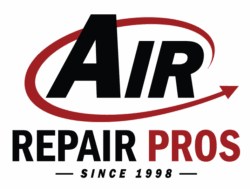When temperatures take a dip, you rely on your home’s heating system to keep things cozy.
But how exactly does your heating system work its “magic”? Obviously, it’s not magic, so today Air Repair Pros is here to demystify it!
Your heating system is made up of several components that work in harmony to generate and circulate warm air through your home!
So without further ado, we techs are putting on our professor glasses to teach you (just like we’re happy to do if you have questions when we’re in your home):
Heat source
The heat source generates warmth by burning fuel like natural gas, propane, or heating oil. This occurs inside the component called the burner, which mixes air and fuel and ignites the mixture. The two most common heat sources found in home heating systems are:
- Furnace burner: Uses gas or propane fuel ignited by a pilot light or electric spark. The flame heats up the furnace heat exchangers.
- Electric heating elements: Use electricity to generate heat. Common in electric heating systems and heat pumps.
Heat exchanger
After the burner ignites and generates flames, the heat exchanger captures the heat from combustion. It contains a series of metal tubes or plates that allow air to pass over the hot surfaces, raising the air’s temperature without mixing with combustion gases. Heat exchangers transfer heat from the burner into the airflow.
Blower motor
This is the lungs of your heating system! The blower motor drives a fan that circulates air across the hot heat exchanger, pulling cool air in and pushing warmed air back out through ductwork into your home. The motor must spin the fan at precise speeds to optimize airflow for comfort and efficiency.
Air filter
Your heating system pulls air back in through the return ductwork but first passes it through an air filter to remove dust, dander, and debris. The filter keeps these particles from building up inside your heating equipment where they can restrict airflow and cause damage. Changing your filter regularly is crucial.
Thermostat
This important gadget controls your heating system based on the desired temperature you set. Thermostats sense the air temperature, communicate this data to your heating system, and turn it on or off as needed to maintain the defined comfort range. Choose a programmable thermostat for added energy savings.
Flue vent
Also called the exhaust vent, the flue vent serves as the exhaust pipe for gaseous byproducts produced by the combustion process inside a furnace or boiler burner. This venting safely removes carbon monoxide, nitrogen oxides, and other gases from your home.
Following proper maintenance practices for components like the heat exchanger, blower motor, air filter, and flue vent keeps your heating system providing comfortable, efficient warmth season after season.
The heating experts at Air Repair Pros can inspect your equipment and make any necessary repairs so your heating system hums along happily all winter. Book an appointment online or give us a call at 469-333-2474.

